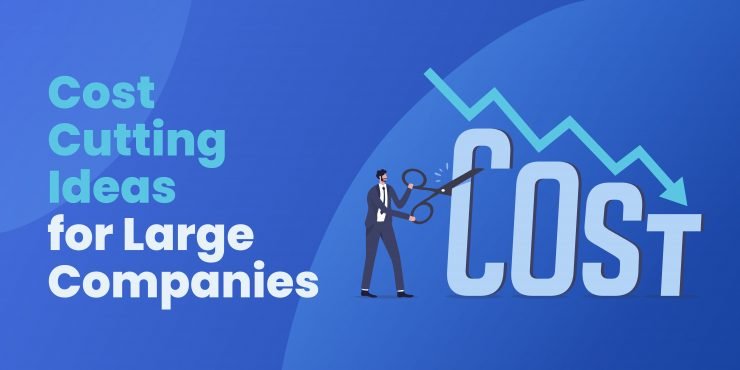The COVID-19 pandemic has forced practically every business to change its financial strategy. Now more than ever, companies are looking for strategies to save money to improve their profit margins as much as possible.
But how do large companies accomplish this without compromising their workplace culture? How do you cut certain costs without losing employees?
While this can certainly be a balancing act, there are plenty of strategies that companies can employ to save as much money as possible while also improving their employee experiences. In this article, we’ll be discussing 16 such strategies and how large companies can incorporate them into their daily operations.
1. Create a Set Of Preferred Vendors
For companies looking to boost their sales, creating a list of the most prominent vendors is a great way to optimize their preferred rates. Companies can track the trips made by their sales and executive employees to find the most frequently visited locations.
They can then save money by speaking to hotels and other businesses in the area to ensure preferred rates. This will help provide a list of preferred vendors that employees can go to, saving the company money by minimizing the amount of ground to cover.
2. Negotiate Vendor Contracts
Speaking of vendors, companies should always check in with their preferred vendors to discuss whether anything has changed and if there are areas your businesses can explore to cut costs or increase efficiency.
Bonus Tip: Consider using flat-rate monthly service vendors. Partnering with graphic design and content writing companies keeps overhead low, while helping maintain a strong brand and marketing presence.
This method of negotiation allows your company to get the right amount of benefit from the vendors you work with. If the proper agreement can’t be met, you can get a head start on contracting new vendors by sending outbids.
This isn’t always about getting the cheapest contract, but rather getting the best quality for what you pay. Negotiating terms with your vendors will let you find the proper middle ground for getting great product value while saving as much money as possible.
3. Store Certain Documents Off-site
If you’re a large corporation, there’s a good chance you have mountains of paperwork and documents that, while important, are infrequently accessed. Storing these documents take up space, and one of the biggest contributors to overblown costs is purchasing storage closets for relatively unimportant items.
This is often an issue for larger medical offices or law firms. Sending these infrequently used or redundant documents to an off-site location creates more space for alternative uses. Perhaps it can be used as a waiting area for clients or another office for additional employees.
Optimizing space and finding the right storage space provider can save your company plenty of money and make your operations more efficient.
4. Use Open Office Concepts
The typical office structure in contemporary society continues to be cramped cubicles and individually isolated offices. There’s value in exploring other office concepts, such as ones that offer more mobility and employee flexibility.
Places like Deloitte’s Adelaide office do away with designs that assign employees to a specific space and instead use more of a hoteling system. While these structures are relatively new and might not be the best fit for every business, it’s an avenue to explore when trying to optimize space and for creating a more dynamic workplace culture.
5. Negotiate Shipping Contracts
Negotiating with shipping companies might seem like a foreign concept for some, but many of these firms provide more flexibility than one might initially expect. Companies can save more money by discussing their contracts with their shipping partners outside of simply getting a few discounts.
Contracting a third-party to either get a quote on their current shipping deals or to carry out the negotiations themselves are both recommended. Either way, there’s likely an opportunity for companies to save money every year by discussing their shipping contracts.
6. BYOD (Bring Your Own Device)
Companies that have traditionally bought laptops, computers, and other electronic devices on behalf of their employees can look to alter this policy by employing a BYOD approach. Instead of purchasing them directly, businesses can instead subsidize employees for purchasing their own equipment.
This not only allows employees and companies to share the cost of repairing and replacing certain hardware, it allows the former to purchase their preferred equipment for their work. Businesses will also save thousands of dollars a year without having to buy a specific set of electronics for every employee.
7. Stop Shredding Paper
In most firms, shredding paper has to be done manually by employees. For companies that deal with sensitive private or otherwise confidential information, shredding papers is essential for safeguarding their clients as well as for abiding by legal guidelines. However, this function can certainly be made more efficient.
Professional paper shredding companies might sound like a ludicrous idea, but when you consider how many hours employees have to spend shredding paper instead of actually doing work relevant to your company’s functions, it’s going to make a difference.
It’s important to calculate the time your employees spend shredding paper and compare that to the cost of contracting shredding companies. If the numbers align, avoiding shredding at your company altogether might be a cost-effective solution.
8. Parcel Auditing
A parcel audit is a process of reviewing invoices for billing inaccuracies such as invalid charges. Getting charged for small invoice errors happens more often than you might expect, and eliminating that possibility is an essential money-saving strategy for companies.
Contracting auditors to parcel audit is the recommended strategy, as your employees are going to have a hard time tracking down all of your invoices and shipping documents over the course of a year. Contractors will provide the best strategies for recovering lost fees and other expenses.
9. Constantly Evaluate Personnel
Not every workforce is going to be perfect, and there’s always a chance that your company has a few underperforming employees that can potentially be detrimental to your overall efficiency. Poor work performance can cut into your bottom line, and it’s important to identify who these people are and take proper action.
Instead of firing underperforming workers and having to incur the cost of turnovers, re-hiring, and re-training, engage in other more sustainable strategies. Perhaps an employee might not have enough work on their hands, at which point you can reassign them to other departments to make better use of their time. Constant evaluation can lead to better optimization of your workforce.
10. Invest In More Cost-Effective Marketing and Advertising Methods
Depending on what your company has traditionally done for advertising and marketing, alternative strategies might be a great way to curtail costs. Regular print or TV advertising is no longer the only viable option, and it’s never too late to engage in cheaper alternatives.
Investing in online advertising through Google Adwords or Facebook Ads can lead to potential leads, and engaging in email or SMS marketing is proving to be effective. If your marketing department is having trouble saving money or optimizing its resources, consider these alternatives.
11. Provide Employee Incentives
Workers are more likely to produce better results if they’re properly incentivized to do so. Perhaps you can increase the commission level for your sales team and slightly decrease their overall salary.
Companies can also experience greater efficiency and an improved bottom line by providing raises and bonuses for improved employee performance. This creates a mutually beneficial system where employees are properly compensated for their efforts while companies experience greater sales and better profit margins.
12. Rethink Your Office
With COVID-19 placing a stronger emphasis on remote work, we’re seeing a lot of firms seeing emptier offices every week. Companies can go all-in on this trend by seeking alternative ways to use their space.
There’s no point paying for spaces that aren’t going to be used by your employees since many of them are working from home. As such, think more about how you can better utilize your current space for a smaller workforce instead of thinking about expansion.
13. Print Less
Depending on your company, becoming a paperless firm can provide plenty of benefits – both environmental and financial. Less printed material means less money spent on paper. You’ll also save money on printing ink and printer repairs.
Transitioning into a paperless environment will be different from business to business, as some firms undoubtedly rely on physical documents than others. However, seeking this option as much as possible is highly recommended.
14. Invest In Cloud Computing
Going back to the proliferation of remote work, there’s a greater emphasis on cloud computing now more than ever. Companies should look to invest in more robust and stable cloud systems to make sure their employees are able to carry out their daily functions from any distance.
Workers end up wasting a lot of time if they constantly have to diagnose cloud-related problems, necessitating proper investment in a reliable program. Overall, a comprehensive cloud system saves time, resources, and money when carrying out daily functions.
15. Reduce Landline Phones
While there is still a place for landline phones in corporate offices, companies can look to reduce its usage for saving money. Cell phones are perfectly adept for receiving and transferring calls, and depending on your employees, it might even be more accessible than a landline system.
Whenever you’re conducting a telecommunications audit, you often see errors regarding your landline phone usage. By reducing the number of landline phones in your company, you can reduce these invoice errors as well, thereby saving money in the long run.
16. Purchase Used Equipment
Not every single piece of equipment has to be brand new. While this is heavily context-dependent, getting slightly used equipment can provide perfectly adequate returns on investment.
For companies trying to cut costs without compromising the quality of their workspace, taking the time to find high-quality used equipment might be a worthwhile strategy.




















